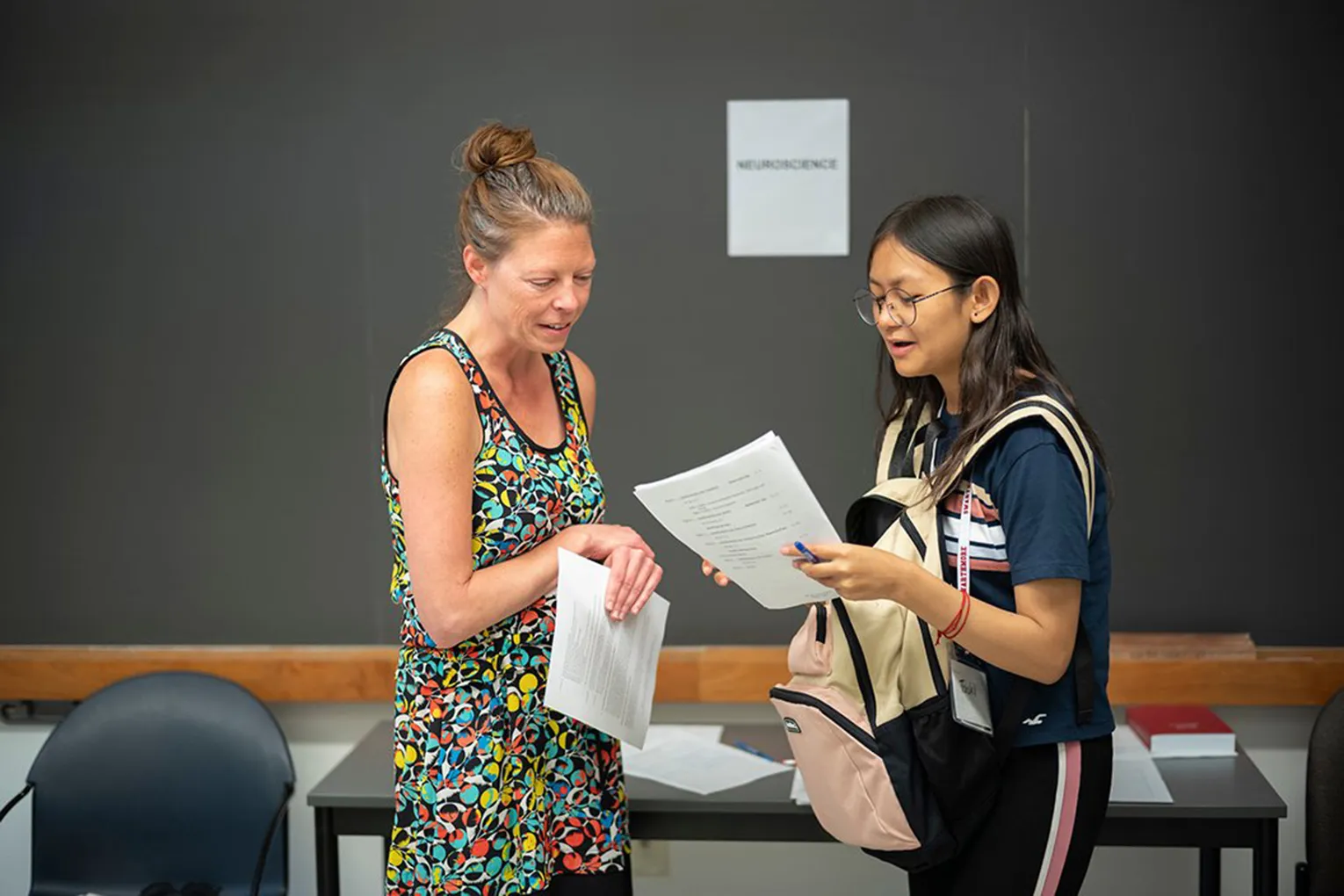Friends Historical Library, 1838 Black Metropolis Deepen Understanding of Philadelphia’s Pre-Civil War Black Community

Mwihaki Kiiru (above), a senior at Cheyney University and Black Metropolis intern, analyzed census data with an eye for the human stories and relationships that sustained this 19th-century community, confirming nearly 400 matches.
The Friends Historical Library (FHL) of Swarthmore College and 1838 Black Metropolis, an award-winning public history nonprofit, recently partnered to deepen the understanding of Philadelphia's pre-Civil War Black community, producing a valuable resource for genealogists, 19th-century scholars, statisticians, and educators.
Their project analyzed the 1838 and 1847 censuses of Philadelphia’s free Black residents, which marked the first time in U.S. history that Black Americans led the collection of their own social statistics. These records, and the stories they tell, reveal how the lives of pre-Civil War Black Philadelphians continue to echo in the present.
“Nearly 200 years ago, Philadelphia’s Black community was the largest in the country and was doing important, impactful work in civil rights, education, and social work,” says 1838 Black Metropolis co-founder Michiko Quinones. “These censuses provide a rare glimpse into where people moved, how their wealth increased or decreased, and how much people paid for their freedom.”
The 1838 census was funded by the Pennsylvania Abolition Society (PAS) and conducted by Charles Gardner, a pastor of the First African Presbyterian Church, and abolitionist Benjamin Bacon.
The 1847 census, first digitized by the FHL in 2002, was undertaken at the suggestion of Quakers and also associated with PAS. In conducting the census, they intended to document the existence of an “industrious and thriving” portion of the city’s population and to discover what sectors of the Black community needed attention and assistance. The record documents about 4,000 households.
Kirsten Lee, the academic director for 1838 Black Metropolis, explains that figure doesn’t represent the entire population of Black Philadelphia; many people were freedom seekers and looking to evade detection, so they did not participate in the census. The city’s Black population is estimated to have been around 20,000 at that time.
“We have long recognized what a valuable resource this census is for teaching Black history through a variety of lenses," says FHL Associate Curator Celia Caust-Ellenbogen ’09, noting the census has been used in several classes on campus. “We are thrilled to support this vital effort.”

From left: 1838 Black Metropolis Co-Founder Morgan Lloyd, Kirsten Lee, Mwihaki Kiiru, and Friends Historical Library Digital Archivist James Truitt in front of St. Paul's Lutheran church.
FHL’s 1847 census digital resources include a finding aid, scans of the records, a page of top occupations, and a transcript of the census data. Recorded occupations range from midwives, bakers, and barbers to blacksmiths, firemen, hotel keepers, hatters, nurses, physicians, teachers, and tailors, painting a vivid portrait of a thriving, skilled community.
“I hope this data … helps people imagine Black individuals in the past and appreciate the complexity and diversity of their lives,” Lee told the Philadelphia Tribune.
Using phonetic algorithms and manual review, FHL Digital Archivist James Truitt compared the two censuses and found hundreds of potential matches. Mwihaki Kiiru, a senior at Cheyney University and Black Metropolis intern, analyzed the data with an eye for the human stories and relationships that sustained this 19th-century community, confirming nearly 400 matches.
“It was really great to work with Haki, not only because she's brilliant, but also because it was clear how much learning this history meant to her,” Truitt says. “I think the project is also a good reminder about how hard it can be to automate work with messy historical data. It's one thing to find people with similar names, but confirming that they're actually the same person is the sort of work you really need a human mind for.”
One of Kiiru’s favorite stories is of Hagar Ballard, among the wealthiest people in the censuses. In 1838, Ballard had a total family wealth of $56,000, much of which came from property ownership, including her own home, but she had no occupation listed. By 1847, she listed her profession as “domestic duties,” which she primarily performed within her own household. She lived with five other women, including her sister, at 170 Locust Street. Ballard’s home is still standing and is a stop on Black Metropolis’ Freedom Seeking and New Life Building walking tour.
“History isn’t behind us, but beneath our feet,” Kiiru told the Tribune. “As a student at Cheyney, retracing the lives of free Blacks living in Philadelphia feels like stepping into a legacy that’s too often left untold. This experience doesn’t just teach me history — it makes me feel connected to it.”
Others notable people identified in the censuses were Sarah Mapps Douglass, a Quaker educator, abolitionist, illustrator, writer, and public lecturer who helped lead the Institute for Colored Youth (now Cheyney University), and Sarah Allen, co-founder of the historic Mother Bethel African Methodist Episcopal Church.
Since the project’s conclusion, Black Metropolis has published the matches between the two censuses, shared stories of Black bankers and freedom lawsuits, and confirmed which homes from the censuses are still present in Northern Liberties and other neighborhoods.
Read more in The Philadelphia Inquirer, and listen to KYW Newsradio’s podcast Bridging Philly: The lives of pre-Civil War Black Philadelphians.



